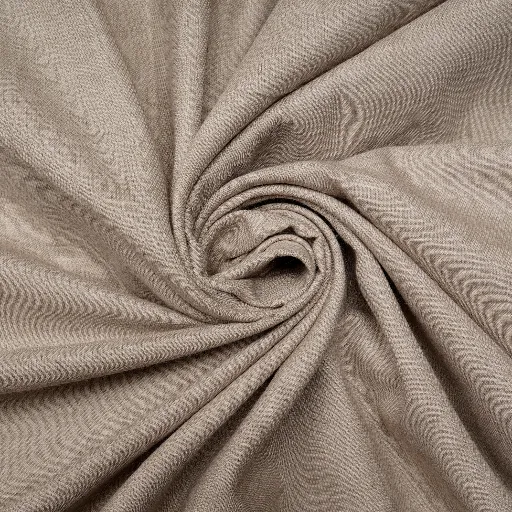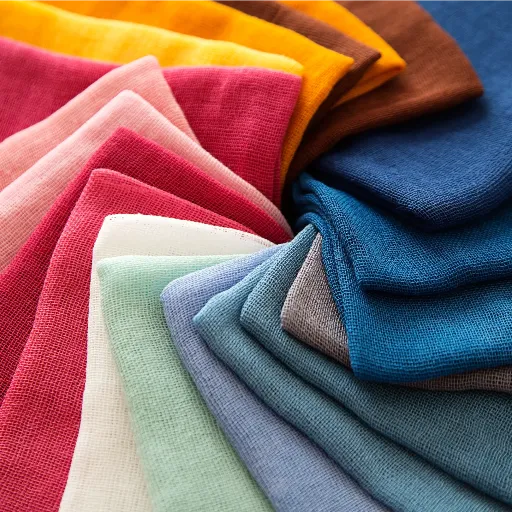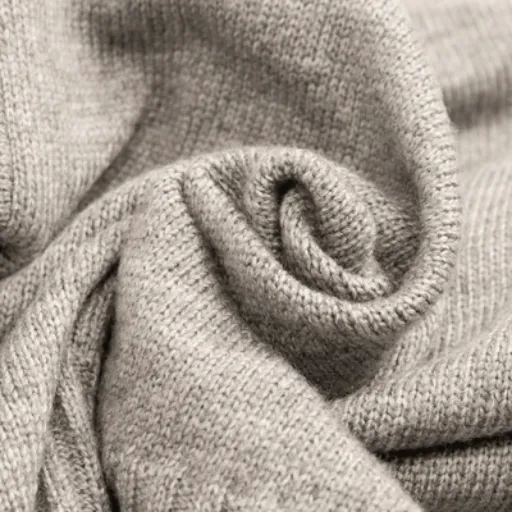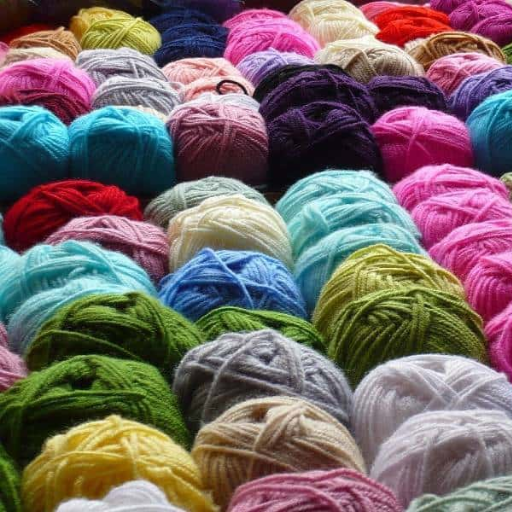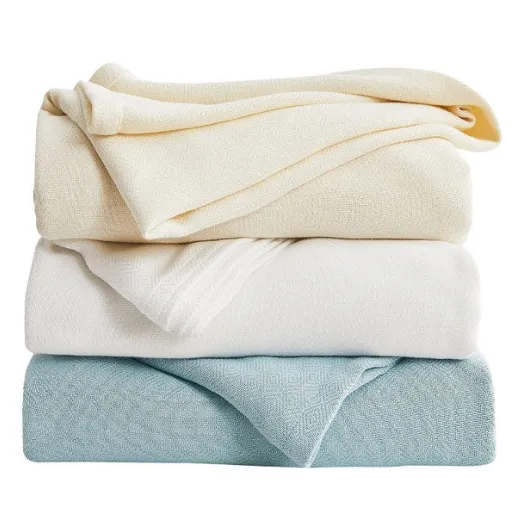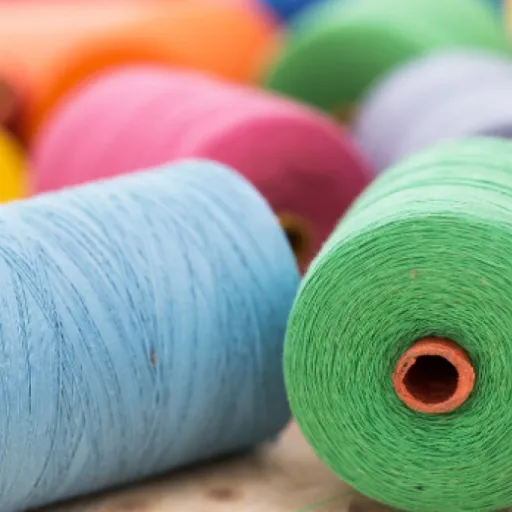The varied choices available to you will overwhelm you when it comes to selecting the perfect yarn for your crafting project. Nevertheless, Cotton acrylic blend yarn is a combination of natural and manmade fibers that blend both of their beneficial aspects. It indeed has a unique combination of comfort, strength, and versatility, making it useful for various items ranging from warm sweaters to lightweight shawls and other accessories. This guide aims to broaden understanding of cotton acrylic blend yarn, its unique attributes and convenience, aiding seasoned crafters, and beginners sail along on their getting creative journey. So, scroll down to see how you can enhance your craft projects with its unique features and practical advantages.
What is Cotton Acrylic Blend Yarn?
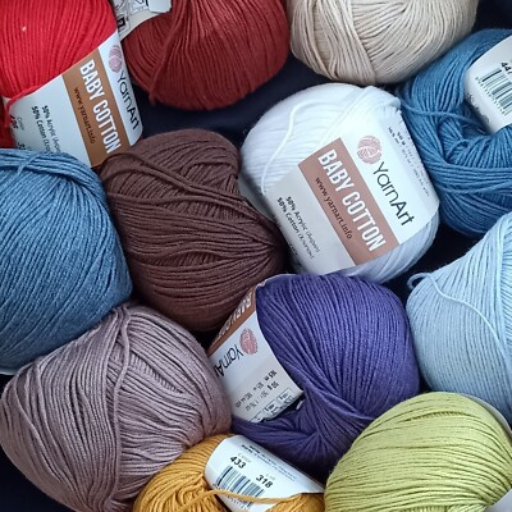
The yarn of cotton and acrylic blend is composed of natural cotton fibers and synthetic acrylic. It is a combination of both natural and synthetic materials. Cotton softens and breathes while providing durability. This works well for comfort driven projects. On the other hand, acrylic adds elasticity and is lightweight as well as resisting shrinking and fading. The combination of cotton and acrylic produces a fiber that is versatile and suited for crafting garments, home decor, and accessories. As such, these fibers are blended with cotton and acrylic to provide beauty alongside functionality.
Understanding the Composition of Cotton Acrylic Blend
The functionality and performance of each fibers is adeptly utilized with the cotton-acrylic blend. This textile blends fulfills the moisture absorbing needs such as those required by sport active uniforms aimed to keep sweat at bay even in humid conditions. As well as the need for elasticity while remaining lightweight. The combination increases durability while preserving the garments longevity with wear and tear over time.
The durability and elasticity of cotton are complemented by synthetic fiber acrylic which adds flexibility. It is made to prevent shinking, fading, or wrinkling which improves the appearance and durability of the blend. Acrylic fibers add value with retaining vibrancy in color over the years which reduces dyeing. Furthermore, its lightweight nature adds a soft drape increasing the dipersability in aesthetics.
The combination of these two fibers produces a textile which is lightweight while damage resistant and colorful making it appropriate for numerous uses. The addition of cotton-acrylic mixtures into everyday clothing, comfy blankets, or elaborate accessories provides an easier construction and natural comfort along with synthetic durability.
The Advantages of Using a Cotton Blend
- Enhanced Durability
Cotton without blends is weaker and less durable than those with synthetic fibers such as polyester or acrylic. Their durability is put to the test in work-casual wear. Research shows polyester blended with cotton can endure up to 50% more washing cycles compared to 100% cotton providing a longer lifespan for uniforms.
- Improved Moisture Management
Synthetic fibers are added to pure cutton for athletic wear to accelerates water wicking and lowers drying times. While pure cutton is absorbable, drying time can take longer without synthetic addidtion. This is key for athletic wear which needs effective perspiration management.
- Resistance to Shrinkage and Wrinkles
The addition of polyester or spandex blended with synthetic fibers to cotton cut the tendecy for cotton to shrink or wrinkle improving its overall look and longevity. This blend is ideal for maintaining a sharp look in clothing for casual and formal wear.
- Versatile Texture and Feel
Depending on the blend, manufacturers can tailor make a blend to suit the softness of cotton infused with smoothness and stretch brought by synthetic fibers. For instance, a blend of cotton with spandex not only provides comfort but can also increase ease for fitted garments.
With these advantages, the blends of cotton remain as a greatly transformable and functional material in many fields from fashion, home textiles to industries. Their ability to provide comfortable and efficient solutions alongside functioning practical needs explains their popularity and unreeling advancements.
How to Choose the Right Cotton Acrylic Blend Yarn?
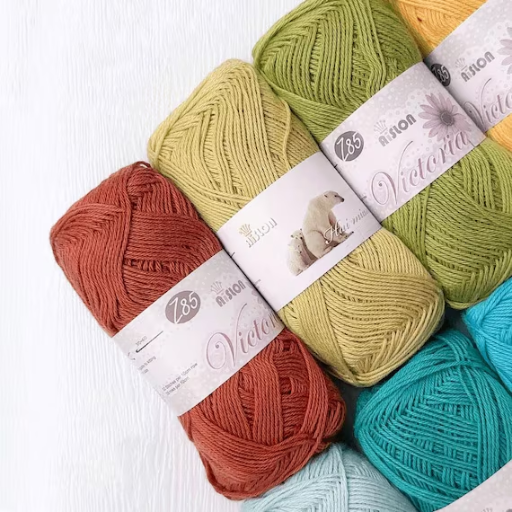
- Intended Use: Decide whether the yarn will be used for apparel, household items, and so on. Cotton-acrylic blends are well suited for clothing, lightweight and durable garments, items requiring softness all blended with ease of movement.
- Fiber Content Ratio: Determine textural and functional preferences when evaluating proportions of cotton and acrylic. It follows logically that breathability and comfort is directly related to a greater percentage of cotton, while resilience and elasticity increases with more acrylic content.
- Durability and Maintenance: Select fiber blends with balanced proportions if easy care, durability, and washing are priorities for maintenance on long-term projects.
- Gauge and Weight: Meeting the yarn requirements for gauge and weight is essential for achieving the desired look and function of the project.
- Color and Dye Options: Coloring options and variety are oftentimes enhanced with the addition of acrylic in the blend. Select a blend with the needed shades for your design.
When these factors are aligned with your needs, performance and satisfaction with the chosen cotton-acrylic blend yarn is maximized.
Understanding Yarn Weight: Worsted vs. DK
The weight of the yarn influences the feel, lifespan, and the fall of your project. Yarn of a medium thickness, worsted weight yarn is often used for scarves, blankets, and sweaters sitting at category 4 in the Craft Yarn Council Standard Yarn Weight System. When knitted or crocheted with needles and hooks from 4.5 to 5.5 mm, worsted yarn yields 16-20 stitches over a 4 inch (10 cm) span.
DK (double knitting) yarn is classified as a lightweight yarn of category or level 3. It is thinner than worsted yarn and is often used for soft garments such as infants’ clothing, shawls, and summer tops. The gauge for DK yarn is usually 21 – 24 stitches over a 4 inch (10 cm) segment and it is compatible with 3.75 to 4.5 mm needles or hooks.
The primary difference across all types is the size and the detailing of stitches. Worsted yarn yields a richer and sturdier outcome, whereas DK results in a finer and more fragile finish. The choice of weight is based upon the specifics of the workload, required balance between cling and flow, and suitability for local weather conditions.
Choosing Between Bulky and Lightweight Options
|
Key Point |
Bulky Yarn |
Lightweight Yarn |
|---|---|---|
|
Weight |
Heavy, thick |
Light, thin |
|
Best for |
Winter projects, warm garments |
Summer clothing, delicate items |
|
Texture |
Dense, sturdy feel |
Soft, airy feel |
|
Needle/Hook Size |
Larger tools required (e.g., 9mm+) |
Smaller tools used (e.g., 2.25mm–4mm) |
|
Stitch Definition |
Bold, pronounced stitches |
Finer, detailed stitches |
|
Time to Complete Projects |
Faster due to thickness |
Slower due to finer work |
|
Suitability for Layering |
Adds bulk, less suitable |
Excellent for layering |
|
Durability |
Often more durable |
May wear down faster |
|
Appropriate Projects |
Blankets, sweaters, scarves |
Shawls, baby clothes, summer tops |
|
Availability of Colors |
Wide range, often in solid tones |
Wide range, includes variegated shades |
What Are the Best Projects for Cotton Acrylic Blend Yarn?
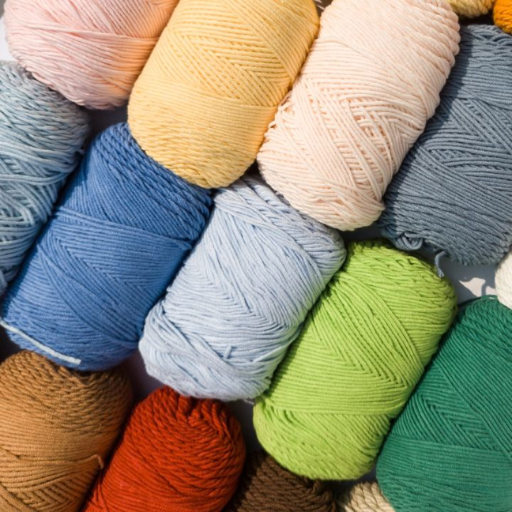
A Cotton acrylic blend yarn is optimal for items that require special softness. It is softer makes it easy for babies and children to wear lightweight sweaters and summer tops. Also, the blend is perfect for home décor items such as throw pillows, and dishcloths because of its ability to withstand shape over time. The range of colors makes it perfect for vibrant creations.
Perfect Patterns for Comfy Shawls and Scarves
Patterns for shawls and scarves must be selected carefully for comfort and warmth. For example, shawls and scarves made using the classic garter stitch pattern will have a cozy, soft drape and retain warmth because of the highly elastic textured fabric the pattern creates. Lacey patterns like feather and fan or star stitch though are breathable and elegant. They work well in transitional weather. Additionally, cables and braided styles bring structure that adds depth and will snugly fit around the neck or shoulders.
To enhance functionality, modern knitting trends advocate pairing yarns with patterns for maximum effect. Bold DK weight or worsted stitchwork is best executed with those yarn types while intricate lace patterns are elevated with fine or lightweight yarns. The end product can be tailored to specific needs by considering the fiber composition, like warm blends of wool or a cool, silky bamboo. These factors ensure that every shawl or scarf will stand out aesthetically and architecturally while still proving to be immensely functional and enduring.
Creating Durable Baby Yarn Projects
Especially when crafting yarn baby projects, safety, softness and enduring quality are essential. Baby yarns must be composed of sensitive and gentle fibers such as 100% cotton, certain blends of bamboo, or superwash wool, which has hypoallergenic properties. Yarn manufacturers have oft labeled these as “baby-safe” or “baby-friendly” which confirms their safety for infants. The yarn also needs to be pilling and wear resistant as well as washable due to the nature of caring for baby items.
Commonly used yarn weights for babies include lighter options like DK or sport weight as they strike the right balance between warmth and breathability without being bulky. Pastel yarn colors or non-toxic dye yarns also provide aesthetic appeal while meeting safety standards. Durability is also determined by stitch tension. Well-formed, tight stitches improve the durability of protective garments from curling or loosening over time. Through these aspects, soft and safe baby garments, blankets, and accessories that withstand the test of everyday use can be crafted.
How to Care for Cotton Acrylic Blend Yarn?
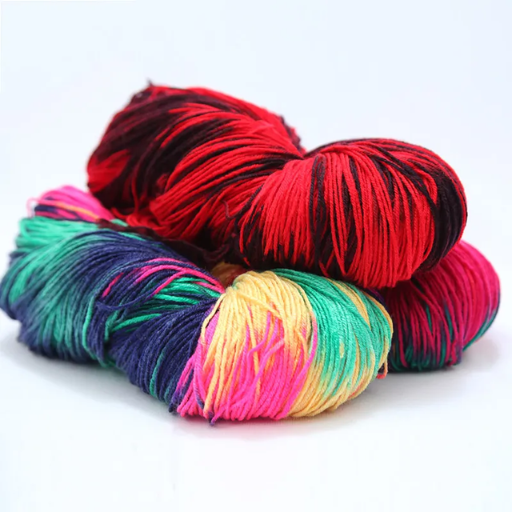
To care for cotton acrylic blend yarn, follow these steps:
- Washing: Gentle detergents work best in cold or warm water. Hand washing is ideal, otherwise use the delicate cycle on the machine.
- Drying: Flat drying is the best method to air dry items. Over high heat should not be applied. Flat drying on clean towels is recommended but to avoid distorting the fibers, twisting or wringing must not be done.
- Storage: Finished and uncompleted projects should be kept in cool, dry, dark spots away from direct sunlight to avoid color fading and deterioration.
- Avoid Heat Exposure: Exposure to the irons exposes them to a lot of unnecessary damages due to the high temperature and heat; therefore, it should be avoided.
Following these procedures allows you to maintain softness, durability and the desirable appearance of cotton blend acrylic yarns the softness, durability, and the desirable appearance of cotton blend acrylic yarns.
Machine Washable Benefits of Cotton Acrylic Blends
Cotton blend acrylic yarns are useful in many areas because of their machine-washable characteristics. Below are the detailed benefits of their machine washability:
- Ease of Maintenance
These blends, unlike a hundred percent cotton, do not shrink or wrinkle, keeping their shape and structure after washing. Still, these blends are low maintenance and gently machine washed friendly. Routine machine washes won’t be a problem, especially when done in the gentler settings, and blend upkeep is simple.
- Durability
The blended yarn’s acrylic portion aids in making the yarn’s strength and resiliency better, enabling it to endure multiple washes without much damage. Research shows that blended yarns outperform pure cotton items by 25-30% in wash cycle endurance.
- Color Retention
Blends of cotton and acrylic guarantee the user excellent colorfastness meaning they will not lose their vibrancy with repeated washing. This feature is ideal for clothing or items washed frequently. Non blended cotton items have been shown to fade at a much faster rate than blended ones. Thus, blended items are far more advantageous, showing 15-20% higher resistance to color fading when compared to non blended cotton.
- Quick Drying
Because blended fibers are composed partially of cotton, their absorbency is lower than pure cotton. Consequently, blended material will dry much faster. This is of great importance to dried laundry as items will take less time to dry while using less energy, leading to greater efficiency.
The ability to be machine washed makes cotton acrylic blends exceptionally useful and convenient, which increases their overall value to consumers and crafters alike.
Tips for Maintaining Your Yarn’s Softness and Durability
- Proper Washing Methods
Cotton acrylic blends should be washed in machines with gentle and delicate cycles only. The best water temperature is lukewarm at 86°F (30°C). Higher temperatures damage synthetic fibers by weakening them while simultaneously causing shrinking to the cotton parts. A mild and non-abrasive detergent should also be used to avoid unnecessary degradation of the fibers.
- Avoid Overloading the Machine
Avoid dry cleaning clothes that are made from the yarn with heavy items, as they are more likely to cause pilling and friction. For thorough cleaning, avoid filling the machine to its maximum capacity which increases likelihood of damage to the items.
- Reshape While Damp
To preserve the item’s shape, carefully reshape it while it is damp after washing. Stretching the item results in temporary deformation of the fabric which damages the elasticity of the fibers long term, especially if the fibers are wrung out.
- Drying Best Practices
Cotton blend acrylic’s worst enemy is drying in direct sunlight. If it must be machine dried, a low heat setting will work best as it mitigates the risk of heat damage due to excessive heat. The best method for drying cotton blend acrylic is air drying. Lay the item on a flat surface and roll with a clean, dry towel to remove excess water. During UV exposure, cotton blend acrylic will become discolored, its fibers weak and brittle, rather than strong.
Through scientifically supported techniques focused on care and maintenance presented above, the functionality and aesthetic of your cotton blend acrylic yarn creations will be preserved through years of timeless, effortless elegance and enduring beauty.
What Techniques Can Be Used with Cotton Acrylic Blend Yarn?
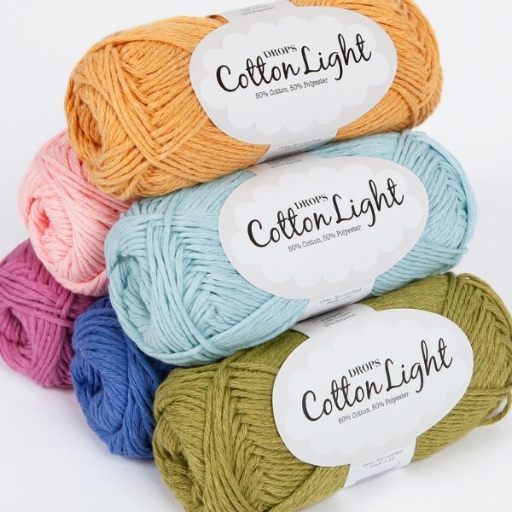
Cotton acrylic blend yarn is versatile enough for various techniques. They include:
- Knitting: The softness and elasticity of the blend enables the construction of garments, accessories and even lightweight fabrics.
- Crocheting: The balanced structure and ease of use makes this blend great for bags, blankets, and even decorative items.
- Weaving: The rigidity and flexibility of the fiber blend are well ideal for use as both warp and weft making pleasing and stable textiles.
- Macramé: The combination’s knotting techniques are more three-dimensional because of the blend’s texture and thus, enrich wall hangings and other ornamental creations.
The said approaches make use of properties of cotton acrylic yarn to ensure the achievement of a long lasting result to the projects such as its softness, durability, and resilience, yielding a high quality result.
Basic Stitch Techniques for Knitting and Crocheting
In any knitting or crocheting project, it is essential to employ basic stitch techniques that will allow one to achieve the desired results in both disciplines. For knitting, two basic techniques, the garter stitch and stockinette stitch, are foundational. The knit stitches for the garter stitch are done in alternating rows and thus the fabric obtained is very stretchable as well as textured. On the other hand, the stockinette stitch, which is made by purling and knitting in alternate rows, yields smooth, uniform fabric that is excellent for use in garments and other accessory items.
In crocheting, similar foundational stitches also exist—the single and double crochet are crucial for any quality design feature. The single crochet is dense and sturdy. It is great for amigurumi or any project requiring a rigid structure. The double crochet is less dense and therefore offers more drape in cozy items such as shawls and blankets while still maintaining some curl to the fabric.
Advanced Techniques: Blending with Other Fibres
Blending fibers offers a strategic method to enhance the versatility and functionality of crocheted projects. By combining natural fibers, such as wool or cotton, with synthetic alternatives like acrylic or nylon, it is possible to achieve an optimal balance of durability, elasticity, and softness. For instance, a cotton-acrylic blend provides breathability while maintaining lightweight properties, making it ideal for garments or summer accessories. Marling, which is the process of combining different strands of fibers, can be used to create multicolored textures, expanding the creativity of the crocheter further. Through careful selection of fiber combinations, crafters can design and target particular functional requirements, such as greater moisture-wicking for active wear or greater tensile strength for household items like rugs. Modern crochet projects showcase the functionality and creativity blending provides through different fibers, thus demonstrating fiber blending mastery strengthens functional potentials.
Reference Sources
-
The Ultimate Guide to Cotton Acrylic Blend Yarn: This guide discusses the properties and benefits of cotton-acrylic blend yarns, focusing on their ease of use, low maintenance, and cotton’s breathability and softness.
-
Top 9 Cotton Blend Yarns: This article highlights some of the best cotton and cotton blend yarns, including acrylic blends, and their applications in crochet patterns.
-
Acrylic Yarn Line Market Overview: This report covers market trends and innovations in blended yarns, including acrylic-cotton mixes, emphasizing their durability and market share.
Frequently Asked Questions (FAQs)
Q: What are the benefits of using cotton blend yarn for my projects?
A: Cotton blend yarn offers a variety of benefits, including excellent stitch definition, breathability, and softness. It’s ideal for warm-weather garments such as cardigans and pullovers, and it can be machine washable, making it a practical choice for everyday items like baby blankets.
Q: How does mercerized cotton differ from regular cotton yarn?
A: Mercerized cotton is treated to improve its luster, strength, and dye absorption, resulting in a smoother and shinier finish. This makes mercerized cotton ideal for projects where you want a polished look, such as garments and accessories.
Q: Can I use cotton blend yarn for knitting and crocheting?
A: Yes, cotton blend yarn is versatile and can be used for both knitting and crochet projects. It’s suitable for various patterns and weights, including worsted weight and chunky cotton, providing flexibility in your crafting.
Q: What types of cotton blend yarns are available?
A: There are many types of cotton blend yarns available, including Coboo, which combines cotton and bamboo, and popular brands like Lion Brand and Premier Yarns. You can also find blends that include materials like acrylic or nylon for added durability.
Q: Is cotton yarn good for making baby blankets?
A: Absolutely! Cotton yarn, especially soft cotton yarn or mercerized cotton, is a great choice for baby blankets due to its softness, breathability, and hypoallergenic properties. It ensures comfort for the baby’s sensitive skin.
Q: What are free patterns available for cotton blend yarn projects?
A: Many websites and yarn brands, such as Lion Brand and Caron, offer free patterns specifically designed for cotton blend yarn. These patterns include a variety of projects, from sweaters to home decor, catering to all skill levels.
Q: How do I care for cotton blend yarn projects?
A: Many cotton blend yarns are machine washable, making them easy to care for. However, it’s essential to check the care instructions on the skein label to ensure proper washing and drying methods to maintain the quality of your finished project.
Q: What is the difference between cotton yarn and wool when making garments?
A: Cotton yarn is breathable and lightweight, making it suitable for warm-weather garments, while wool offers warmth and elasticity, making it ideal for colder climates. Choosing between them depends on the intended use of the garment, such as a summer pullover or a winter sweater.
Q: Can I mix cotton blend yarn with other fibers?
A: Yes, mixing cotton blend yarn with other fibers like acrylic or merino wool can enhance the properties of your project. It can create a yarn blend that offers the best of both worlds, such as warmth and breathability, resulting in a unique texture and feel.








